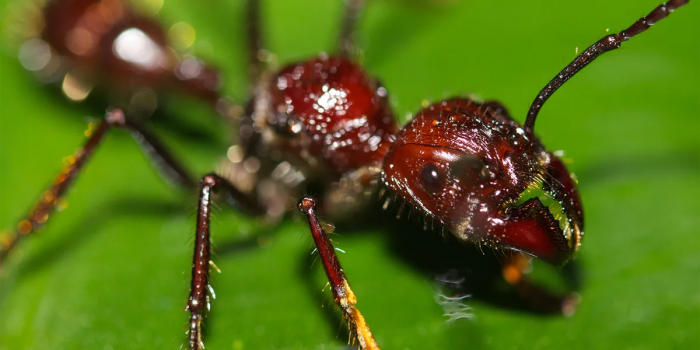Researchers at the University of Queensland have made a groundbreaking discovery, revealing that certain ant stings possess a unique ability to target nerves, comparable to the venom of snakes and scorpions.
Dr. Sam Robinson and his team from the Institute for Molecular Bioscience at UQ conducted a study on the Australian green ant and the South American bullet ant, both notorious for inflicting long-lasting pain with their stings. Through their research, they identified neurotoxins in ant venoms that specifically affect the nerve cells responsible for transmitting pain signals.

Ordinarily, the sodium channels in our sensory neurons briefly open in response to a stimulus. However, the researchers discovered that the ant toxins bind to these sodium channels, making them more prone to staying open and active for an extended duration. As a result, individuals stung by these ants experience a lingering and intense pain signal. For instance, bullet ant stings can induce deep drilling pain that lasts up to 12 hours, accompanied by sweating and goosebumps, in stark contrast to the brief discomfort caused by a typical bee sting.
Although bullet ants are not found in Australia, the native green ant, or greenhead ant, is known to cause similarly enduring pain. Many Australians have encountered this species and experienced the prolonged discomfort it inflicts.

Dr. Robinson emphasized the significance of understanding the mechanisms of pain, as it paves the way for the development of novel treatments. By investigating pain at a molecular level and leveraging the insights gained from studying these ant neurotoxins, researchers can explore innovative strategies for managing pain.
The unique ability of ant venoms to target sodium channels and affect pain perception is unprecedented. Dr. Robinson stated that these neurotoxins, exclusive to ants, provide researchers with a fresh set of tools for further investigations. The origins of these defensive neurotoxins can be traced back to the time of the dinosaurs, as ants developed them as a means to repel predators. Over time, ants have evolved into one of the most successful animal groups on Earth, and their venomous stings represent a remarkable adaptation in their defensive arsenal.
This research is published in Nature Communications.


